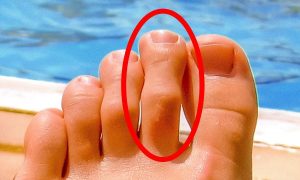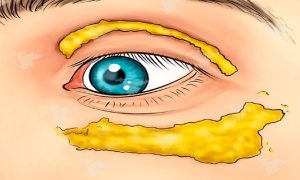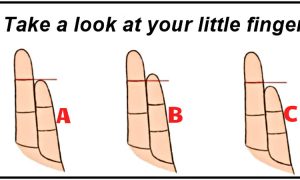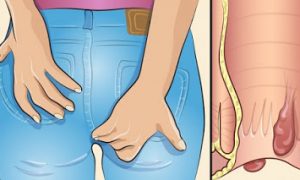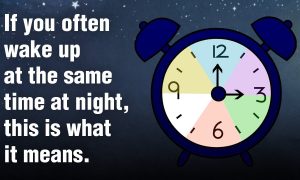Perhaps the biggest topic in health and wellness these days is sugar and how to cut back on consuming it. For ages, the average adult would add a spoonful of sugar here and there to food— it never seemed like a big deal. But over time, food manufacturers started adding sugar to just about everything in the grocery store, even foods that you don’t think of as sweet, like crackers and spaghetti sauce.
Today it’s clear that sugar is linked to various illnesses and conditions, and it is likely a major culprit connected to the rise in obesity and weight gain in this country. The information below will give some background on the sugar debate and suggest ways in which you can cut it out for good.
Does Sugar Make You Fat?
Obesity has been a hot topic in recent years, and with good reason. Roughly 38 percent of adults over the age of 19 in the U.S. are obese. What’s more staggering is that more than 70 percent of adults over the age of 19 are overweight or obese, suggesting that most people in this country have weight problems.
Just think about these statistics a bit: seven out of every 10 adults are overweight or obese. From a public health standpoint, effective weight loss programs are important, and it seems that sugar may play a role. Let’s take a look at how sugar is associated with weight gain.
Sugar’s Calorie Content
One of the first things with any body weight management program is to consider how much you eat and to cut out whatever is unnecessary. Sugar is a major culprit in weight gain since it contains calories, but not much else in the way of vitamins, minerals, or anything else that’s good for you. Overall, if you eat more than what you need, you will store the extra energy as fat. Some weight loss programs suggest that eating fat is the path to gaining fat, but in reality, it does not matter what nutrient you over consume; the more you eat, the more you gain.
Excess Sugar May Lead to Obesity
Considering the difference between how much sugar we should be eating and how much we’re actually eating, that excess sugar consumption might be one of the key factors in the rise in obesity levels in this country. If the recommended amount of sugar is at most 150 calories each day and the average adult is consuming more than double this value, perhaps the increase in overweight or obese adults is caused by this excess.
If a pound of fat equates to roughly 3,500 calories, and men consume 180 calories (at least) in excess and women consume 230 calories (at least) in excess, this could add up over the years. If you do the math on the extra amount men eat, 180 calories of sugar in excess from what is recommended each day, for a total of 365 days over an entire year, and this amounts to about 19 pounds of fat per year. Do the same math for women and this equates to 24 pounds of fat added each year. Doing the math, it seems clear how sugar can contribute to obesity across the nation.
Cutting Sugar to Lose Weight
One of the first rules in any weight loss program is to burn more calories than what you eat. This method suggests that for every 3,500 calorie deficit, you lose roughly one pound of fat. This is not an exact science, but it is a good way to estimate weight loss. In contrast, if you eat more than what your body needs, then you will gain weight. Figuring out the balance between the energy in and the energy out can be a challenge, but cutting sugar may be one of the best ways to reduce your excessive caloric intake.
If you use the figure of 82 grams of sugar consumed by the average adult each day, it should be no surprise that you could lose some serious weight from sugar alone. Consider this: if you eat a standard 2,000 calorie diet (men or women) each day and you immediately cut all sources of sugar from your usual food and drink, you would reduce your caloric load by 330 calories each day, assuming you eat the average of 82 grams of sugar each day. Reducing your caloric load by 330 calories in sugar each day would translate to about 34 pounds of fat loss each year, or close to three pounds per month.
If you are like many adults out there and you feel your diet is impeccable and that sugar is not an issue, consider this: one medium apple contains about 19 grams of sugar, a banana has 12 grams, one orange has 17 grams, and 1 cup of grapes has 15 grams. You can see that sugar is everywhere, even if you have a healthy diet. It is easy to hit the average 82 grams of sugar each day from fruits alone, but considering a plethora of other foods have sugar in them, it would be easy to consume this much without even touching a candy bar.
Effective Ways to Cut Sugar From Your Diet
Now that you have some information on how sugar impacts your weight management, some of the names that it goes by, and the difference between natural and added sugars, you will want to learn about some effective ways to cut sugar out for good. Consider the following tips to aid in your journey to successfully avoid sugar in your daily eating habits.
1. Substitute sugary beverages for water.
It may taste boring when you first make this switch, but beverages are the primary source of added sugars in the adult diet. Consider drinking your coffee black without sweetener or sugars and avoid all forms of soda, including ones with artificial sweeteners.
2. Be mindful of sugar substitutes.
Avoiding sugar is something that adults on diets aim to do, and many switch to artificial sweeteners as an alternative. While they may be calorie-free, artificial sweeteners and sugar substitutes can be up to 600 times sweeter than regular sugar, which means your brain thinks you are consuming enormous amounts of sugar at one time. This strategy often leads to you having intense sugar cravings throughout the day.
3. Avoid fruit juices.
An orange has plenty of sugar, and a cup of orange juice has the juice of five oranges in there—so it has five times the amount of sugar. And that’s if you make the juice yourself. Orange juice found in cartons in the grocery store—even the ones that say they’re not from concentrate— are highly processed, and many brands have added sugar.
4. Limit fruit.
If you are serious about cutting sugar from your diet, you should pay attention to how much sugar is in the fruit you’re eating. Fruit can be healthy for you, but you need to limit your intake to 2-3 pieces at most a day—and count that as part of your sugar consumption.
5. Get used to reading grocery labels.
Even if the ingredient list on your favorite food items doesn’t specifically list “sugar” as an ingredient, there’s still a chance that it could have a high sugar content under the veil of a different name. There are at least 60 other names for sugar out there, with the most common being high fructose corn syrup.
6. Be mindful of your snacks choices.
Similar to the last tip, always check the ingredient list of your snacks. Most of the popular snacks on the shelves today contain a high level of sugar as that is the easiest way to get consumers hooked onto the product. In Suspro protein bars, all products are low sugar and contain less than 4g sugar. Also, the top ingredient in the bar is the combination of natural seeds, sunflower seeds, pumpkin seeds, quinoa, and chia seeds. Remember to check out Suspro Foods if you want a healthier snack.
7. Know the difference between natural and added sugar.
Not all sugar is created equal and it’s important to know the difference between natural vs added sugar. While it may be difficult to avoid all forms of natural sugar, avoiding added sugars that are refined or processed can be a realistic goal to strive for.
8. Helpful Weight Loss Tips
If you have ever been on a diet plan only to see it work briefly and then go south from there, then you should consider a lifestyle change to make your plan more effective. Consider the tips below as some of the most effective ways to boost your weight loss journey so that your previous frustrations turn into successes.
9. Adjust your exercise routine.
One way to boost your weight loss success is to adjust your exercise routine. Many adults hit the gym, perform endless amount of cardio exercise day after day, only to see minimal results. There are a couple of reasons for this. First, your cardio intensity may not be high enough. Consider high-intensity interval training (HIIT) for better results. Second, add a resistance training program—lifting weights, for example—which will help build muscle. Muscle burns more energy than fat, so this will help with weight loss. Changing your workouts to include high intensity interval training as well as resistance training is a great way to boost your metabolism and add lean muscle mass.
10. Avoid long periods of sitting.
One of the biggest issues with weight loss is that adults go all-out at the gym, only to lose all of the benefits directly afterwards. Studies have shown that sitting for long periods of time can lead to weight gain, suggesting that changing this habit may help with n your weight loss goals. Avoid sitting for longer than 30-60 minutes at a time throughout the day for best results. Taking standing breaks can help to circulate your blood, and it increases your heart rate and metabolism just enough to where your body is not in continuous fat storage mode.
11. Be mindful of alcohol.
Another factor that adults should watch when attempting to lose weight is alcohol consumption. Alcohol may have some health benefits, but consuming it often can lead to increased fat production as well as inflammation. Consider cutting alcohol from your diet any time you are looking to lose weight and only drink amounts that current health guidelines suggest you consume.
12. Make a Habit of Walking.
One effective way to control your body weight is to take a brisk walk after each meal. Research has shown that brisk walking after a meal for about 15-45 minutes can lead to an improvement in overall glycemic control in older adults. An improvement in glycemic control could cause better usage of insulin, which could lead to a reduction of fat in your body. Consider making a brisk walk a habit after each meal and you may see great benefits in both weight and in mood.
What are your thoughts? I’d be very thankful if you’d help it spread by sharing it on Pinterest. Don’t keep this to yourself, please share this post on your Pinterest Board.



